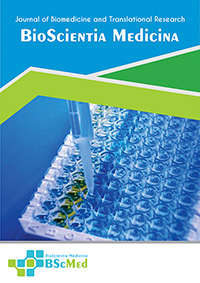Main Article Content
Abstract
Background: Electrosurgery is a common and effective technique for removing skin lesions and achieving hemostasis in dermatologic surgery. However, managing patients on antithrombotic therapy, especially geriatric patients with comorbidities, presents a significant challenge. This case report highlights the importance of meticulous pre- and perioperative optimization in such patients to ensure safe and successful outcomes.
Case presentation: A 69-year-old male patient with a history of congestive heart failure (CHF), Non-ST elevation myocardial infarction (NSTEMI), type 2 diabetes mellitus, and hypertension presented with a nevus exhibiting cornu cutaneous. The patient had been on long-term aspirin therapy. The case discusses the complexities involved in deciding whether to discontinue aspirin, weighing the risks of bleeding against the potential for thrombotic events. After a three-week delay and consultation with an internist to address elevated coagulation parameters, the electrocauterization excision was performed successfully.
Conclusion: This case underscores the critical role of multidisciplinary collaboration and evidence-based decision-making in the perioperative management of geriatric patients on antithrombotic therapy undergoing dermatologic procedures. It emphasizes the need for individualized risk assessment and optimization strategies to balance the competing risks of bleeding and thrombosis.
Keywords
Article Details
As our aim is to disseminate original research article, hence the publishing right is a necessary one. The publishing right is needed in order to reach the agreement between the author and publisher. As the journal is fully open access, the authors will sign an exclusive license agreement.
The authors have the right to:
- Share their article in the same ways permitted to third parties under the relevant user license.
- Retain copyright, patent, trademark and other intellectual property rights including research data.
- Proper attribution and credit for the published work.
For the open access article, the publisher is granted to the following right.
- The non-exclusive right to publish the article and grant right to others.
- For the published article, the publisher applied for the Creative Commons Attribution-NonCommercial-ShareAlike 4.0 International License.





